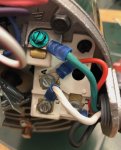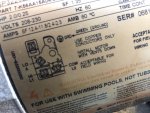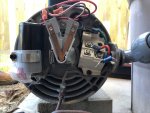- Apr 8, 2020
- 25
- Pool Size
- 52000
- Surface
- Plaster
- Chlorine
- Salt Water Generator
- SWG Type
- Hayward Aqua Rite Pro (T-15)
My Hayward pump (Hayward SP32202EE TriStar 2 HP Pool Pump, Dual-Speed, Energy Star Certified) is relatively new (Apr 9, 2019).
I replaced the starting capacitor about 6 months ago and everything worked great. Now, the pump will start, but will soon trip the breaker. I have removed the impeller and diffuser and there is/was nothing clogging it. The shaft feels like it spins freely, without any sort of binding or resistance. I even started the pump without the impeller installed and it made the same BAD sound and tripped the breaker.
I should add that after noting the pump was not on today, I cleaned out a lot of debris from my skimmers and pump strainer basket. I guess there is a chance that the strainers were so clogged that limited water supply to the pump caused motor damage? Seems unlikely. Maybe the start capacitor is not functioning correctly? Not exactly sure what my next troubleshooting steps should be.
I replaced the starting capacitor about 6 months ago and everything worked great. Now, the pump will start, but will soon trip the breaker. I have removed the impeller and diffuser and there is/was nothing clogging it. The shaft feels like it spins freely, without any sort of binding or resistance. I even started the pump without the impeller installed and it made the same BAD sound and tripped the breaker.
I should add that after noting the pump was not on today, I cleaned out a lot of debris from my skimmers and pump strainer basket. I guess there is a chance that the strainers were so clogged that limited water supply to the pump caused motor damage? Seems unlikely. Maybe the start capacitor is not functioning correctly? Not exactly sure what my next troubleshooting steps should be.




